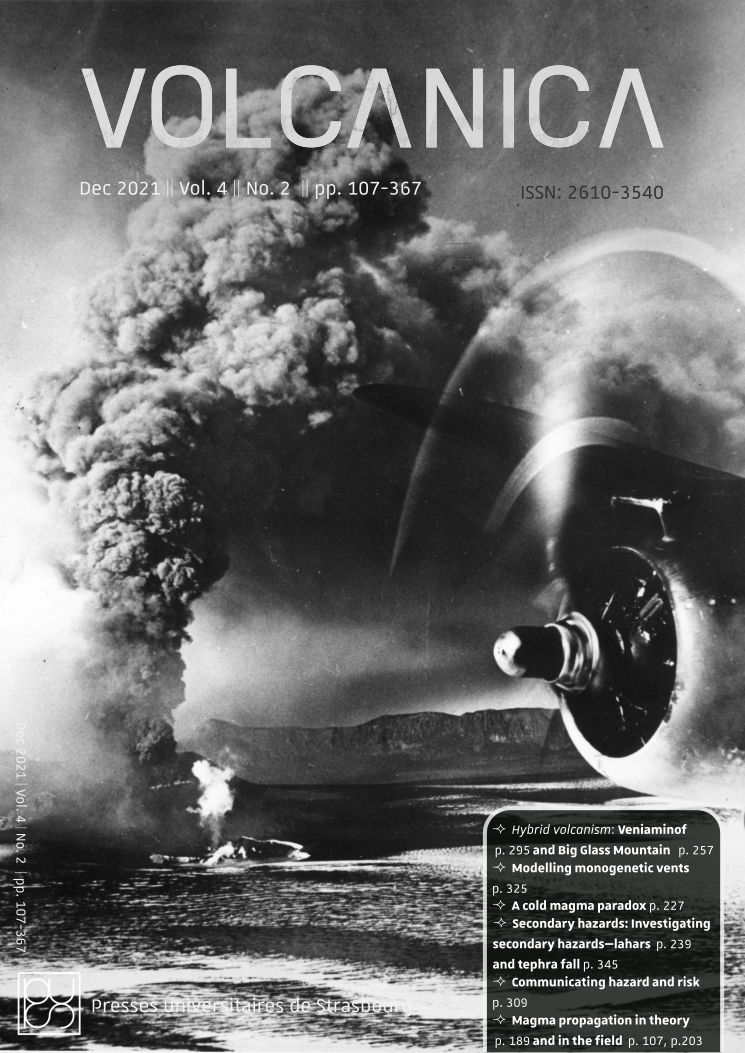Tracking secondary lahar flow paths and characterizing pulses and surges using infrasound array networks at Volcán de Fuego, Guatemala
Main Article Content
Abstract
Lahars are one of the greatest hazards at many volcanoes, including Volcán de Fuego (Guatemala). On 1 December 2018 at 8:00pm local Guatemala time (2:00:00 UTC), an hour-long lahar event was detected at Volcán de Fuego by two permanent seismo-acoustic stations along the Las Lajas channel on the southeast side. To establish the timing, duration, and speed of the lahar, infrasound array records were examined to identify both the source direction(s) and the correlated energy fluctuations at the two stations. Co-located seismic and acoustic signals were also examined, which indicated at least 5 distinct energy pulses within the lahar record. We infer that varying sediment load and/or changes in flow velocity is shown by clear fluctuations in the acoustic and seismic power recorded at one of the stations. This particular event studied with infrasound provides insight into how lahars occur around Volcán de Fuego.
Downloads
Article Details

This work is licensed under a Creative Commons Attribution 4.0 International License.
© The Author(s).
Submission of an original manuscript to Volcanica will be taken to mean that it represents original work not previously published, and not being considered for publication elsewhere.
The Creative Commons Attribution 4.0 International License permits unrestricted use, distribution, and reproduction in any medium, provided you give appropriate credit to the original author(s) and the source, provide a link to the Creative Commons license, and indicate if changes were made.
Accepted 2021-08-26
Published 2021-10-25





